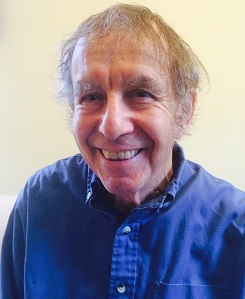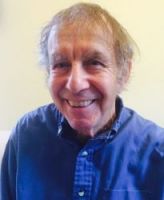
Download the PDF version here.
The time has come for community psychology to move onto the main stage of community life and onto the national agenda.
Given the social and political conditions facing our country, we should be national leaders; for more than almost any other discipline, we can provide a vision of the fundamental importance of strong community life and of the community that most of us would like to live in. But we are not national leaders. We never have been. Yet that could change.
Community psychology has made significant strides in the past few years to reach beyond disciplinary borders, with more outreach still in the works. We must acknowledge and appreciate these accomplishments. Still, they’ve not been enough. We are still invisible to the general public, and absent from local and national policy discussions. We should do better; and we can.
What holds us back? There are many reasons why. One of them has to do with the reward structure of academia, which tilts toward small research studies, the kind that appear in our journals. Research studies are of course essential; they yield advances; but often they nibble around the edges of the larger problems. Often we fail to pursue the greater vision. We hesitate at big thinking and boldness. We need more of both.
Another major reason: Most readers may subscribe to the community psychology values we’ve learned, going back to graduate school. But suppose we went beyond intellectual acceptance of those values. Suppose we rather felt them in our bones, embedded them in our hearts, and made a full commitment to implement them in both our professional and personal lives.
Suppose we also then envisioned a community guided by those values – a community that was participatory, inclusive, cohesive, supportive, caring, warm, vibrant, resilient, and more; a community we ourselves would seek out. With greater confidence in our own vision, and greater personal commitment to it, that community is surely within our grasp.
To foster such commitment, and to stimulate big-vision thinking and action, it should help to cite real-world community examples as models – and there are plenty of them if we look around. In the space allotted to us, we’ll note three:
1. Loneliness in Vancouver
One provocative example comes from Vancouver, British Columbia (Kassam, 2017). When community leaders identified the city’s most urgent problems, they didn’t choose poverty or homelessness; instead they chose loneliness. Surveys later confirmed that about 25% of residents experienced loneliness, millennials especially so. In response, one resident started a “Say Hello” project, distributing buttons and stickers to those willing to converse with strangers. More broadly, a municipal Engaged City Task Force was created, leading to initiatives such as more information booths around town, a 311 Smartphone app, and opening up civic facilities to the public (with selfies in the Mayor’s chair).
Loneliness prevention is relevant to community psychology, but is it a proper role for government? An unusual question, yet perhaps the answer is “yes.” Consider the similar perspective of Joe Curtatone, mayor of Somerville, Massachusetts, which has begun city-wide happiness surveys: “What is the purpose of government if not to enhance the well-being of the public?” (Dreilinger, 2011).
2. Do-It-Yourself Lowell.
Or consider DIY Lowell (Do-It-Yourself Lowell, in Massachusetts), whose start-up activities were described in this Bulletin two years ago (June, 2015). Begun and coordinated by two young newcomers to the city, DIY Lowell generates a variety of community-building activities for everyone, created and led by residents through open online idea submission, Idea Summits, online voting, and the formation of small resident teams to implement winning ideas. Current projects include floating lanterns in the city’s canals, a domestic violence survivor gallery of hope, and a pop-up cinema. (Last year: bus stop libraries and fruit tree planting.) In two short years, with next to no money and no direct government support, DIY Lowell has become a recognized force in the community.
That’s not entirely surprising. As one of my own mentors taught me, “People want to do meaningful civic work.” They just need to be pointed in a meaningful direction. (More at www.diylowell.org.)
3. Resistance School.
Finally, if you have an axe to grind, or a cause to promote, why not start a school? That’s what a small group of Harvard graduate students did earlier this year. They were opposed to Trump administration policies, but how to counter them? The answer was Resistance School, an online curriculum open to anyone without charge. Four instructional sessions – on Advocating Values, Getting Organized, Building and Leading Teams, and Sustaining the Resistance – ran live in April, with 15,000 [!] participants from 50 states. These sessions, with full-length videos, readings, and worksheets, are now accessible at www.resistanceschool.com.
As community psychologists, why not start our own community-building school? We could certainly do it. Shouldn’t we be ready by now to use and institutionalize this kind of electronic technology to advance our own vision?
These brief examples – there are many others – vary widely in content; but what they have in common is that they are feasible, replicable, and small in initial scale, yet also broad in aim and expandable. They are competence-building, health-promoting, and participatory. They reflect community psychology values. And they exemplify implementation of the big vision we are talking about.
We should note too that these and in fact most comparable projects were not begun by community psychologists. To frame this positively, many can do the work we’d like to do. But we could do the same or better in SCRA, in our own field. We have the skills. It’s largely a matter of mindset, and a matter of will.
So, to propose a moral: When practicing community psychology, let’s keep our big vision in mind. Let’s take action worthy of that big vision, and begin to make an intentional impact upon the larger society. Isn’t that what community psychology is ultimately for? By so doing, we can provide leadership our country needs. And, over time, we can transform community life; we can help create the communities of our dreams.
Readers, what do you think? Are we fulfilling our disciplinary role, and our own personal role, in shaping the communities we envision? What might we do differently? [1], [2]
References
Dreilinger, D. (2011). Somerville officials smiling over happiness survey. Retrieved May 17, 2017 from http://archive.boston.com/yourtown/news/somerville/2011/08/by_danielle_dreilinger_globe_c_73.html.
Kassam, A. (2017). Is Vancouver lonelier than most cities or just better about addressing it? Retrieved May 17, 2017 from https://www.theguardian.com/world/2017/apr/04/vancouver-loneliness-engaged-city taskforce-canada. [See also Brad Olson’s SCRA list-serv post in early April.]
NOTES
[1] Comments on this article may be left below or directed to the author, at Bill_Berkowitz@uml.edu.
[2] A related Town Hall discussion of these issues, titled “Can Community Life Be Transformed?” will be held at the 2017 SCRA Biennial on Thursday, June 22 at 1:15pm.
This is one of a series of bulletins, formerly titled Theory into Action, highlighting the use of community psychology in practice. Comments, suggestions, and questions are welcome. Please direct them to Tabitha Underwood at underwoodtabitha@gmail.com.
 Bill Berkowitz
Bill Berkowitz
Bill Berkowitz is Professor Emeritus of Psychology at the University of Massachusetts Lowell and former Coordinator of its graduate program in Community Social Psychology. He is also an original and continuing team member of the Community Tool Box (http://ctb.ku.edu), the largest single source of information about community development presently in existence. His prior work includes community program creation, program administration, and consultation in different community settings. Bill’s particular interests are in local community development and the strengthening of community life. His four books, book chapters, and articles focus on skills, ideas, and examples for improving local communities. In his home community, Bill represents his neighborhood in public office as an elected Town Meeting Member.